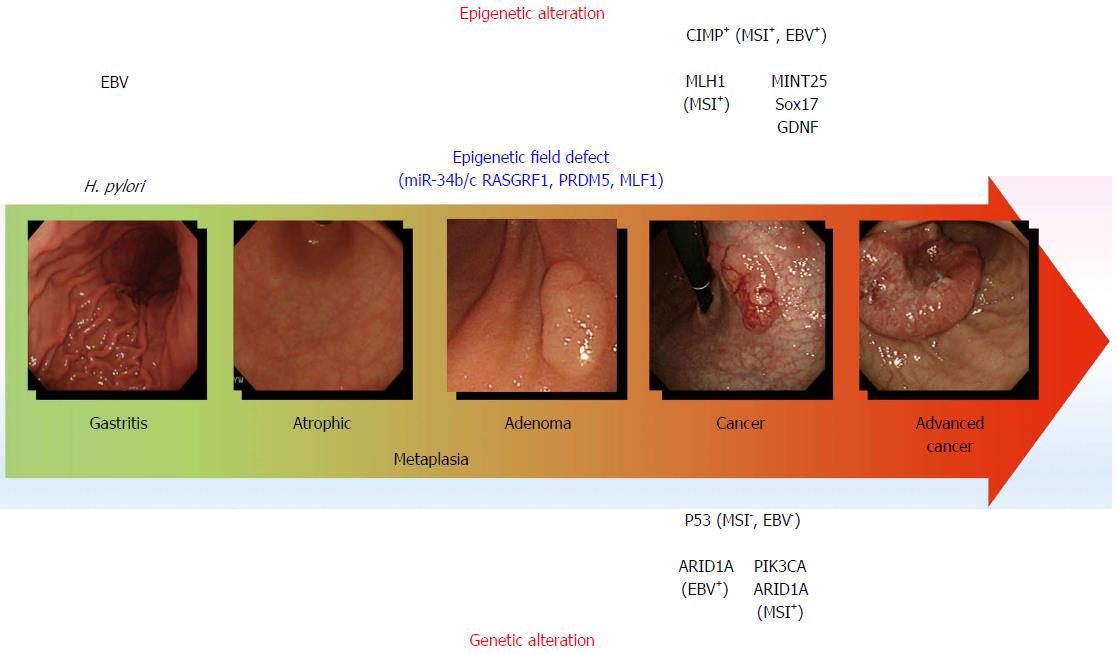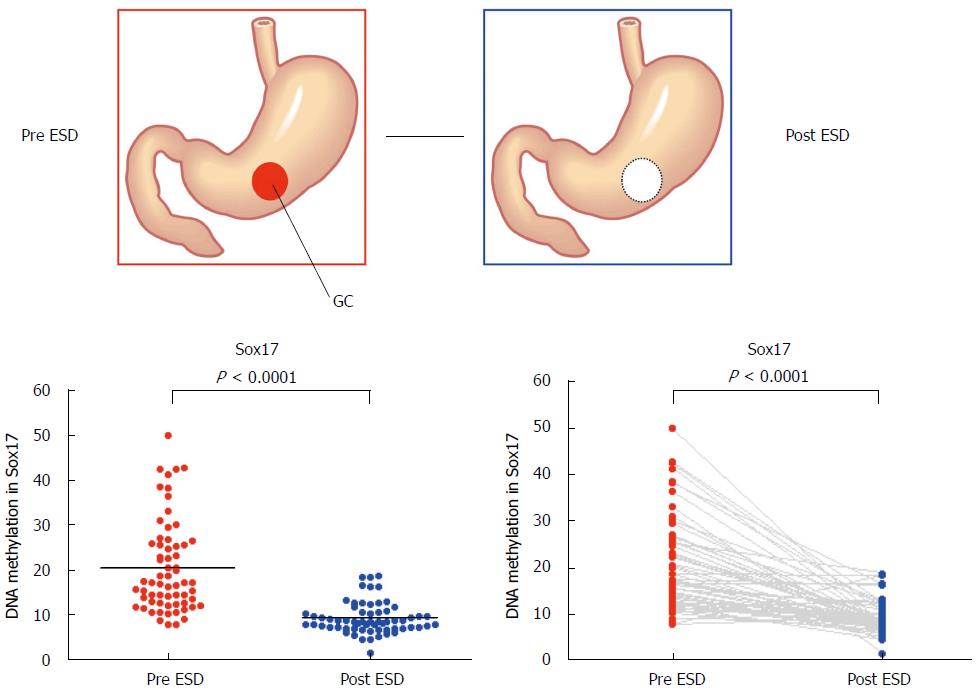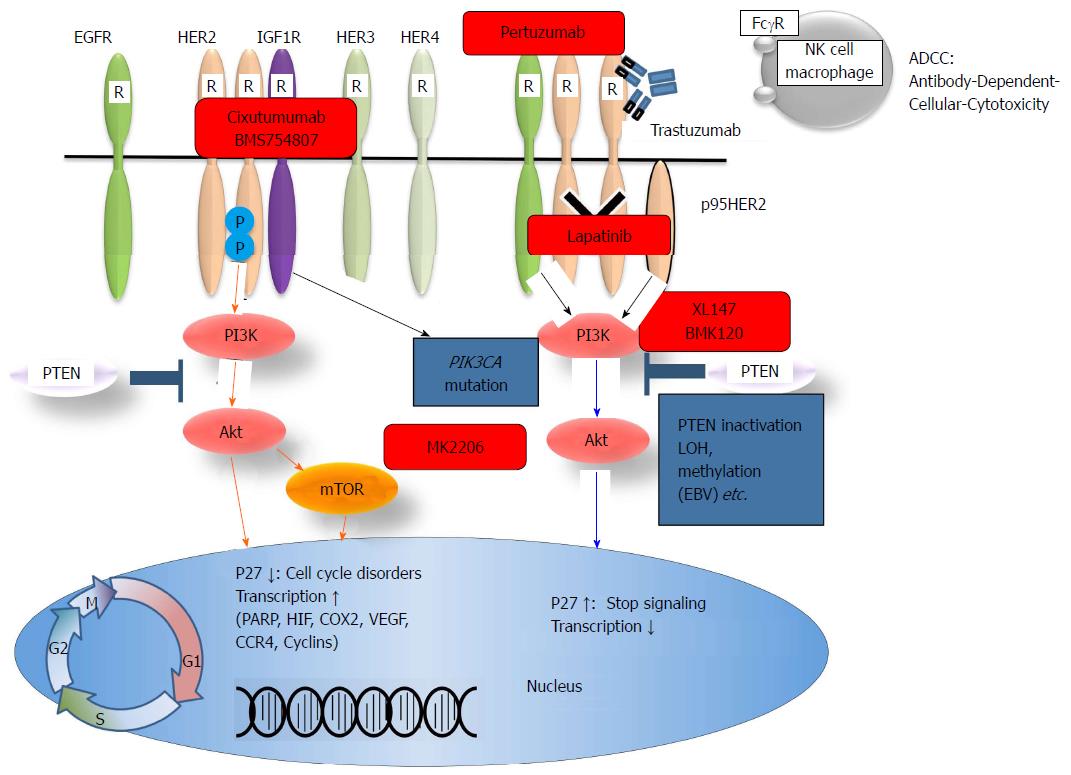Copyright
©2014 Baishideng Publishing Group Co.
World J Gastroenterol. Apr 14, 2014; 20(14): 3927-3937
Published online Apr 14, 2014. doi: 10.3748/wjg.v20.i14.3927
Published online Apr 14, 2014. doi: 10.3748/wjg.v20.i14.3927
Figure 1 Genetic and epigenetic alterations in gastric carcinogenesis.
The model for gastric carcinogenesis is presented based on genetic and epigenetic alterations. Methylation of the genes in blue appears to be involved in an epigenetic field defect. H. pylori: Helicobacter pylori; MSI: Microsatellite instability; EBV: Epstein-Barr virus; CIMP: CpG island methylator phenotype.
Figure 2 Molecular pathway for microsatellite instability+ gastric cancer.
The model for the carcinogenesis of microsatellite instability (MSI)+ gastric cancer is presented. CIMP: CpG island methylator phenotype.
Figure 3 Methylation levels of Sox17 before and after endoscopic submucosal dissection.
Methylation levels of Sox17 were analyzed by pyrosequencing using the DNA recovered from gastric washes before and after endoscopic submucosal dissection[57].
Figure 4 Human epidermal growth receptor family members, the PI3K/Akt pathway, and targeted drugs.
HER: Human epidermal growth receptor; NK: Natural killer; IGF1R: α-insulin-like growth factor 1-receptor; EGFR: Epidermal growth factor receptor; PI3K: Phosphatidylinositol-3-kinase; PTEN: Phosphatase and tensin homologue.
-
Citation: Yamamoto H, Watanabe Y, Maehata T, Morita R, Yoshida Y, Oikawa R, Ishigooka S, Ozawa SI, Matsuo Y, Hosoya K, Yamashita M, Taniguchi H, Nosho K, Suzuki H, Yasuda H, Shinomura Y, Itoh F. An updated review of gastric cancer in the next-generation sequencing era: Insights from bench to bedside and
vice versa . World J Gastroenterol 2014; 20(14): 3927-3937 - URL: https://www.wjgnet.com/1007-9327/full/v20/i14/3927.htm
- DOI: https://dx.doi.org/10.3748/wjg.v20.i14.3927
















